Templot Club Archive 2007-2020
|
|||
| author | remove search highlighting | ||
|---|---|---|---|
|
posted: 14 Aug 2020 00:12 from: Rob Manchester
click the date to link to this post click member name to view archived images |
Hi, Can somebody explain the construction/operation of stub turnouts ? They seem to be confined to narrow gauge lines ( unless I missed something ). There appear to be two types of them : 1) Where the usual twin switch rails are replaced by a single switch rail that also takes the place of the closure rail. The single switch rail either ( I think ) pivots around a fixed point near the end of the crossing rails or is joined to the rails forming the crossing by flexible links. Examples in this lovely video from half way round the world - here 2) Where the closure rails are retained as normal and the normal switch rail operation is reversed - the switch rails pivot at the toe end of the turnout and line up at the other end with the closure rails for each road. An example of a 3 way version of this type - here - presumably the turnout lever in the picture would have a detent of some type for setting the middle road ? ---- Anybody done any research into these, built any or have have any thoughts ? Are both types correct for UK practice ? Rob |
||
|
posted: 14 Aug 2020 04:41 from: Matt M.
click the date to link to this post click member name to view archived images |
Hi Rob, I'm sure there has been an earlier discussion of stub or slide switches. I've not seen the first version before outside of some toy train sets. Probably because of the limitations it places on track geometry. Plus limitations on weight and wheelbase of stock. The second version was quite widely used. The photo attachment is Philadelphia, I think, and you can see the advantages of the switch. Also good for pushing snow off the PW. 2282_132318_200000000.jpg 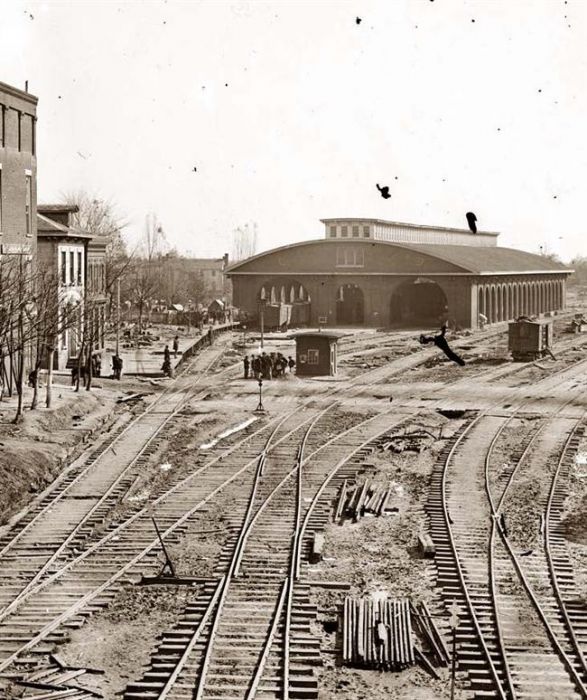 You are correct that there is a detent but they were considered unsafe and phased out. At least on passenger lines. In the distance you can see a small group of people next to a hut. In front of them is a winding handle gear drive as opposed to the lever on the nearer crossing. If you are modelling early English railways or American you would probably have need to build one of these. Regards, Matt M. This is a drawing of one used on a jetty in Australia. 2282_132337_030000000.jpg 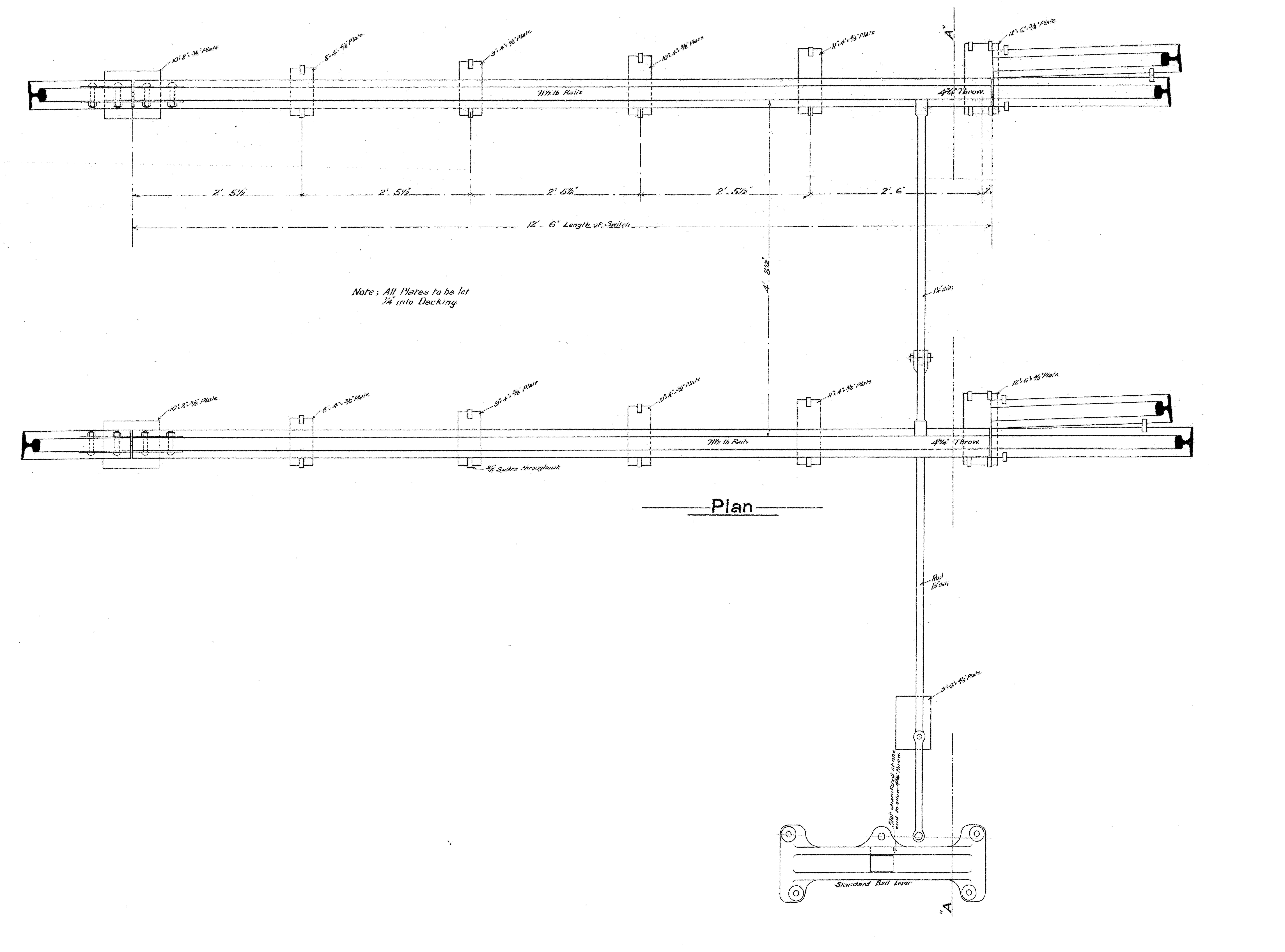 |
||
|
posted: 14 Aug 2020 08:46 from: wcampbell23
click the date to link to this post click member name to view archived images |
Hi Rob There is a well known example of a single switch rail turnout - the first type you mention at the summit station on Snaefell - photograph here: http://www.geograph.org.uk/photo/5070833 Regards. |
||
|
posted: 14 Aug 2020 09:21 from: Paul Boyd
click the date to link to this post click member name to view archived images |
Hi Rob Your first type with a single switch rail was used in some Welsh quarry railways, and the Corris railway used them here and there. In my head there's a photo of one being "switched" - a man lifting the free end and moving it across, but of course I can't find it now. There's also the type used on the Penhryn Quarry Railway, with a switched crossing. (The photo is a quick snap from an old book). Note the economical use of a single check rail! 105_140358_010000000.jpg 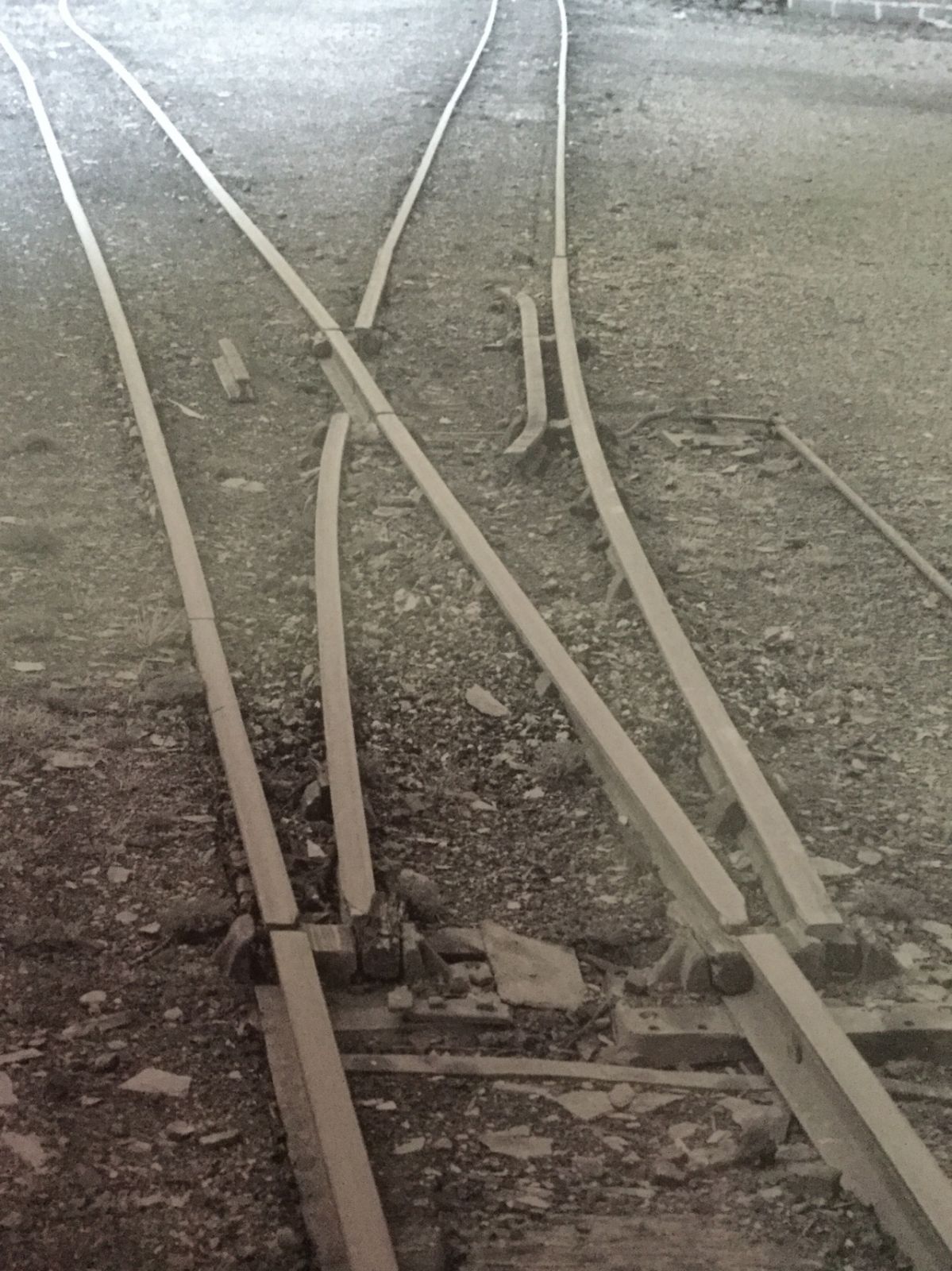 As far as the Ffestiniog 3-way stub point goes, yes I have built one! The 2005 photos show this on a layout that no longer exists, although the crossing assembly does and will be incorporated into my "flat bottom" layout that's been discussed recently. The crossing assembly is straightforward to build, as was the switch (the photo shows it prior to having the tie-bars cut to fit an insulating sleeve over). The difficulty was in the operation, specifically keeping the free ends of the switch blades down. I have a better idea for my new layout using a tongue that runs in a slot under the stub ends of the crossing. 105_140409_420000000.jpg 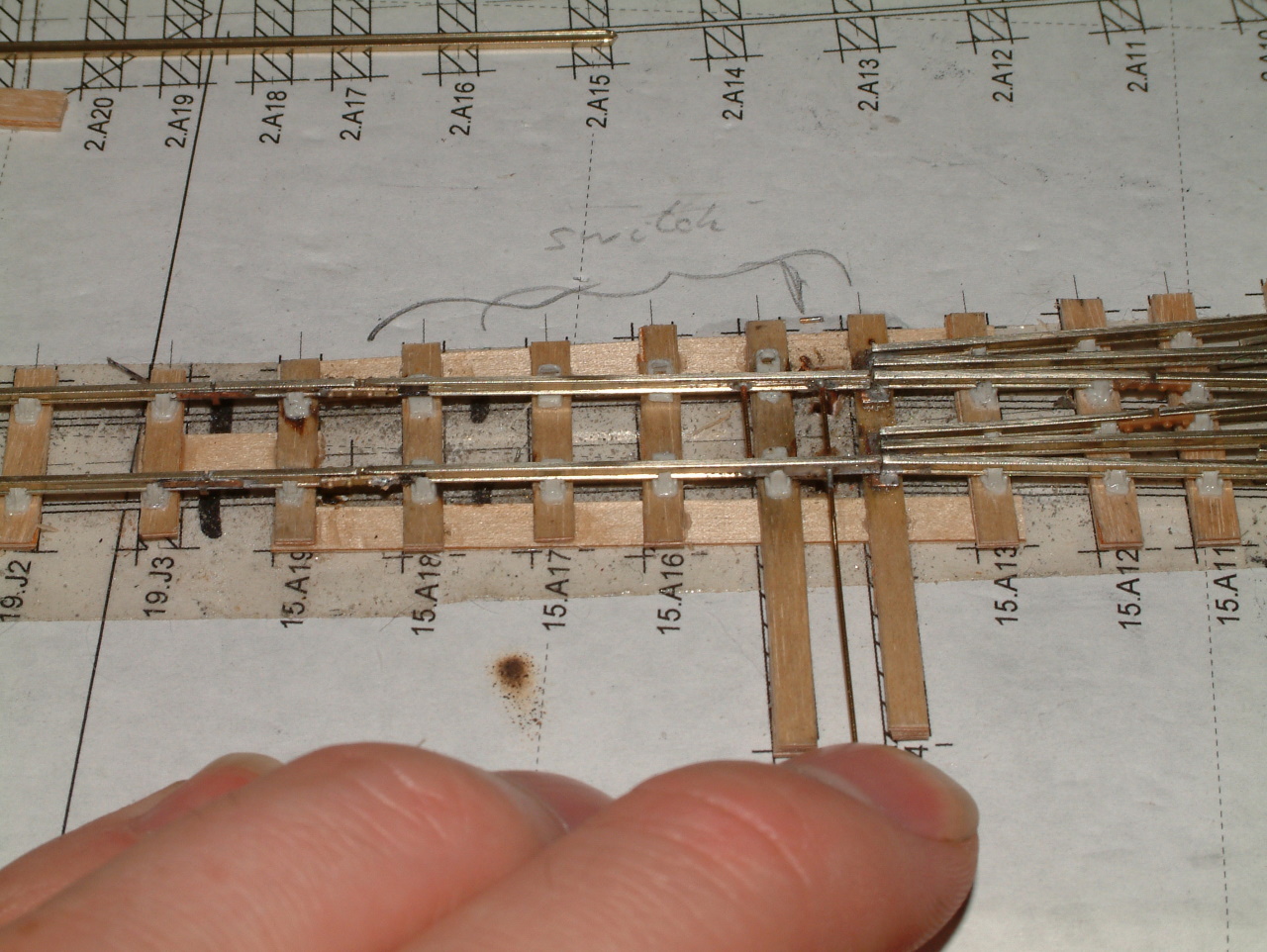 105_140410_320000000.jpg 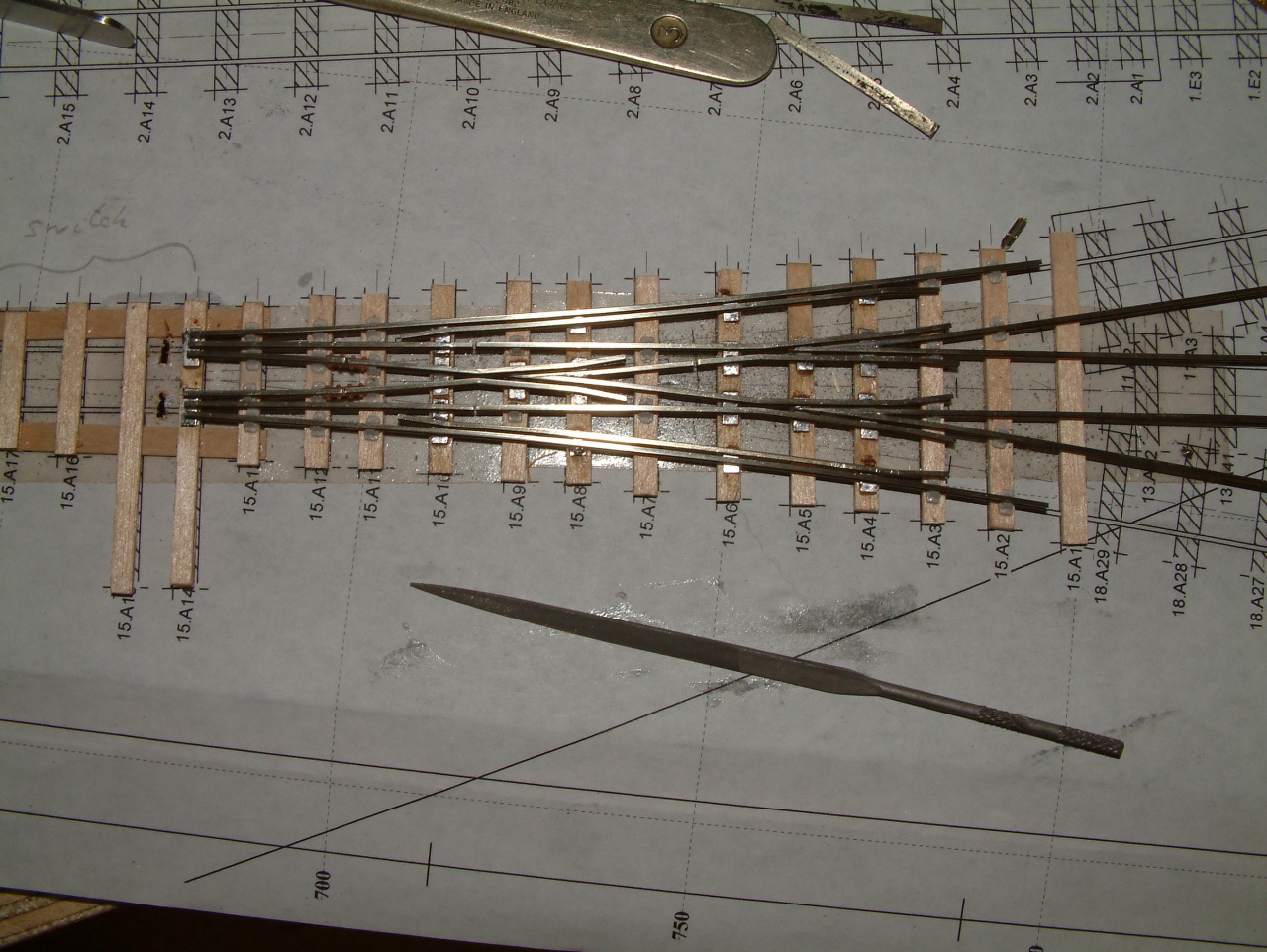 Originally the switch was operated using a memory wire mechanism which worked well enough but I wouldn't use again. Basically two bars that each drive half the movement of a beam attached to the tie bar. I'm intending to use two servos on the new layout. 105_140413_250000000.jpg 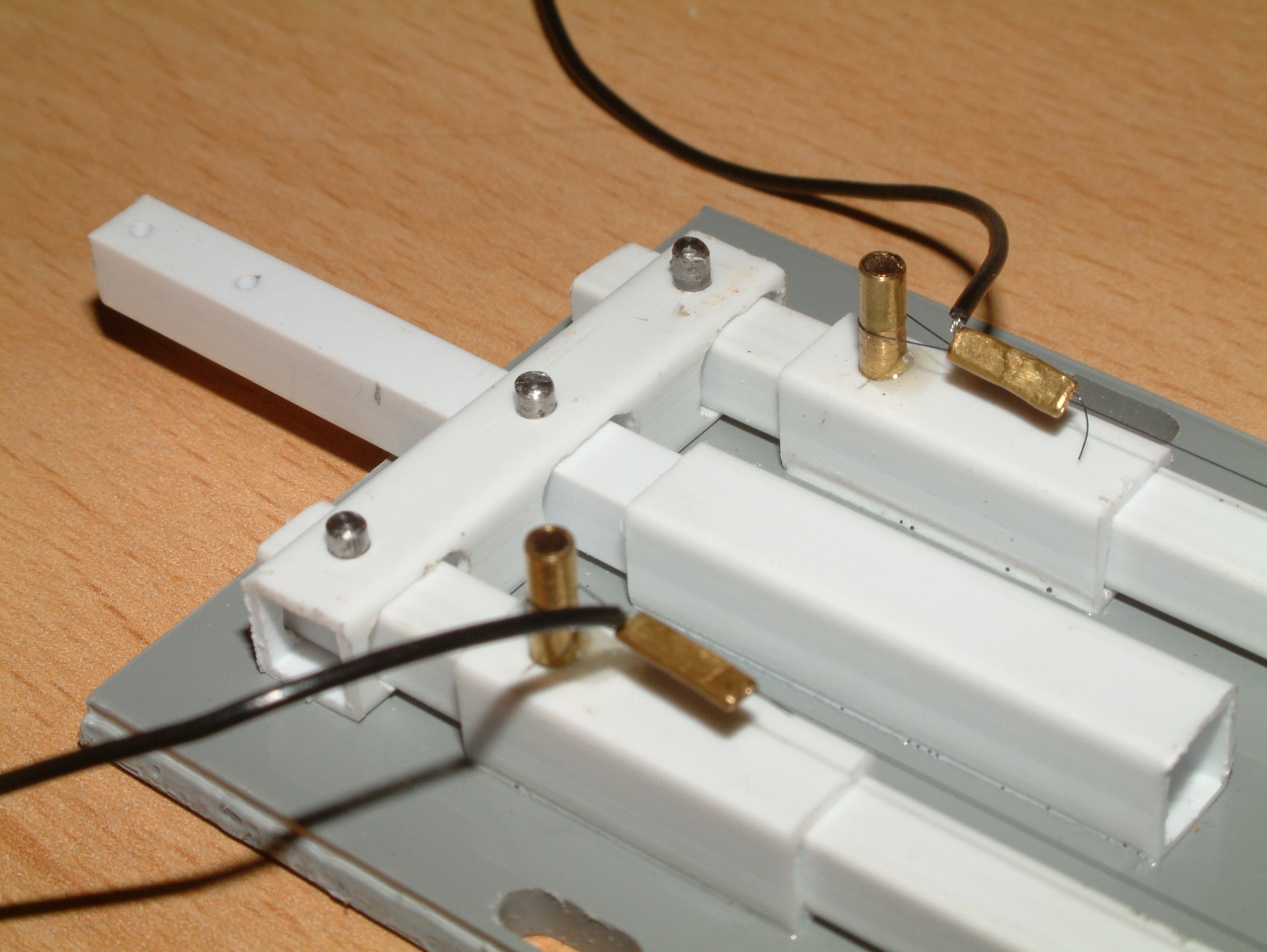 Incidentally, does the Ffestiniog 3-way still exist? I know it was moved to Minffordd, then I think moved again to one of the yards, but I'm not sure if it's still around. I hope so as it's one of the iconic parts of the railway's history, but "iconic" doesn't always count for much. Cheers, Paul |
||
| Last edited on 14 Aug 2020 09:24 by Paul Boyd |
|||
|
posted: 14 Aug 2020 14:40 from: Nigel Brown click the date to link to this post click member name to view archived images |
There's one of the first type at the top of the first incline at the Bryn Eglwys slate quarry at Abergynolwen, off the end of the Talyllyn Railway. At least, there was the last time I was there. Nigel |
||
|
posted: 14 Aug 2020 22:12 from: Rob Manchester
click the date to link to this post click member name to view archived images |
Hi Paul, Thanks for the excellent pics. The Penhryn picture is a hybrid of both types of turnout in that two operations ( maybe interlocked/maybe not ) are required to switch the directions of the turnout. One to move the stub switch rails and one to align the crossing piece. Thanks to all who posted. My head is much clearer on what I can do now. Rob |
||
|
posted: 14 Aug 2020 22:30 from: Paul Boyd
click the date to link to this post click member name to view archived images |
Hi Rob From looking at other photos of the Penrhyn turnouts, both parts were moved simultaneously from the same lever at the same time. Cheers, Paul |
||
|
posted: 15 Aug 2020 00:13 from: Rob Manchester
click the date to link to this post click member name to view archived images |
Paul Boyd wrote: Hi RobHi Paul, Yes, I was hoping that would have been the case. Thanks again for the ideas. Rob |
||
| Please read this important note about copyright: Unless stated otherwise, all the files submitted to this web site are copyright and the property of the respective contributor. You are welcome to use them for your own personal non-commercial purposes, and in your messages on this web site. If you want to publish any of this material elsewhere or use it commercially, you must first obtain the owner's permission to do so. |